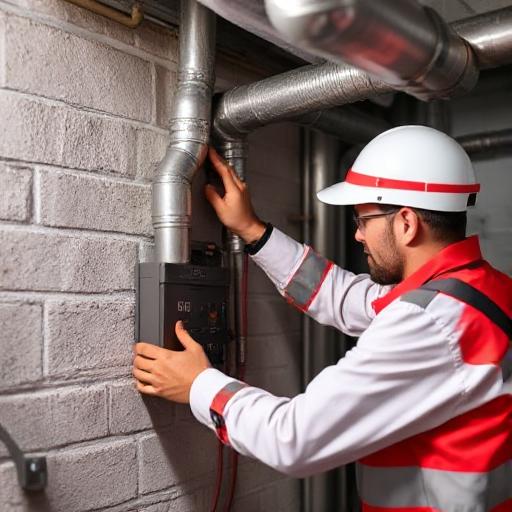Handling HVAC Emergencies: Essential Safety Protocols
In the world of HVAC, emergencies can sneak up on you when you least expect them. Whether it’s a sweltering summer day or a frigid winter night, having a plan in place is crucial. Did you know that HVAC systems have a 45% higher failure rate during extreme weather events if maintenance is deferred or emergency prep is ignored? Let’s dive into essential safety protocols that can keep you and your team safe while minimizing system downtime.
Understanding HVAC Emergencies
Before you can handle an HVAC emergency, it’s important to understand what causes these situations. Common issues include electrical shocks, refrigerant leaks, and falls, among others. In fact, in 2020 alone, there were 7,900 reported cases of HVAC-related workplace injuries, with sprains, strains, and tears leading the list.
Essential Safety Protocols to Implement
Implementing strong safety protocols can reduce workplace injuries and illnesses by up to 40%. Here are some steps you can take:
- Conduct pre-installation safety checks and comprehensive risk assessments.
- Ensure emergency contact information is clear, accessible, and regularly updated.
- Organize regular training and drills for all personnel.
- Perform critical pre-emergency system inspections, including checking refrigerant levels and compressor operation.
Regular Maintenance: Your First Line of Defense
Regular maintenance and inspection of your HVAC systems can reduce the risk of equipment failure by up to 30%. This includes evaluating electrical connections and ventilation pathways to pinpoint components at risk under extreme conditions.
Stay Compliant with Standards
OSHA and ASHRAE standards are there to ensure safety and functionality. These include mandates for hazard communication, minimum ventilation rates, and protocols for indoor air quality and equipment safety.
Advanced Tools for Emergency Situations
In today’s tech-savvy world, tools like the Ruud Econet 800 Series smart thermostat can be a lifesaver. Available from Mar-Hy Distributors, it offers remote monitoring and control, enabling rapid system diagnostics and adjustments during crisis scenarios. This can be essential when coordinating an emergency AC repair or after-hours furnace repair.
Conclusion
By following these HVAC emergency safety protocols, you can protect your team and keep your systems running smoothly. Remember, preparation is key to preventing and effectively managing emergencies.
Ready to enhance your emergency protocols? Contact your local emergency HVAC contractor today!
FAQs
What are the most common HVAC-related injuries?
Sprains, strains, and tears are the most common, with 2,420 reported cases in 2020.
How can regular maintenance prevent HVAC emergencies?
Regular maintenance can reduce the risk of equipment failure by up to 30%, ensuring your systems are in top shape.
What tools can help manage HVAC emergencies?
The Ruud Econet 800 Series smart thermostat offers remote monitoring and control, aiding in rapid response during crises.
Why is training important in preventing HVAC emergencies?
Training ensures all personnel know the safety protocols, reducing risk and enhancing response time during emergencies.
How do OSHA and ASHRAE standards contribute to HVAC safety?
These standards mandate hazard communication and safety protocols, ensuring a safe and functional workplace.


